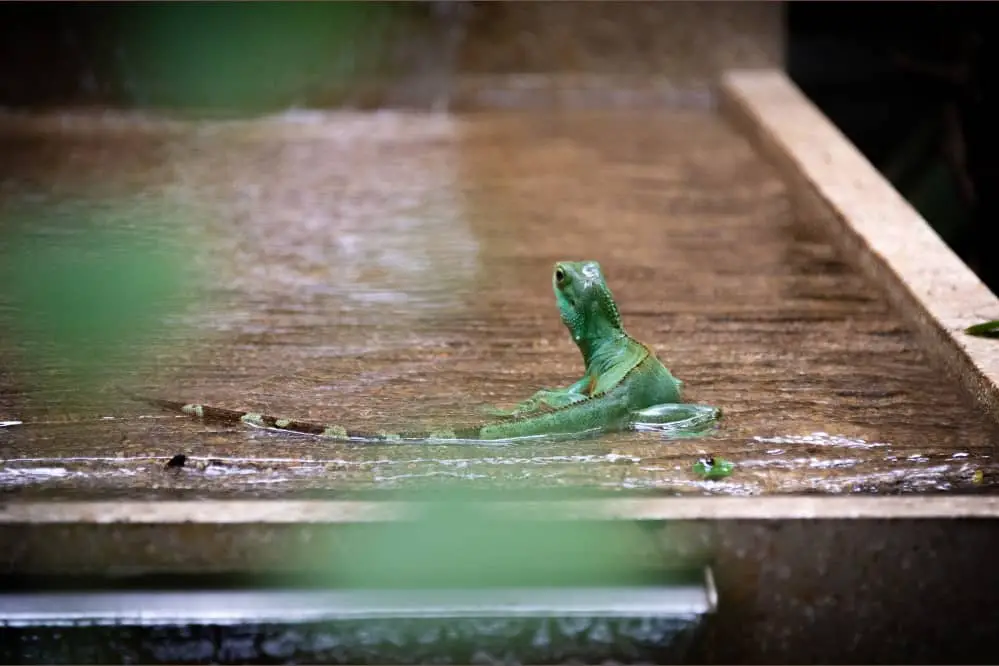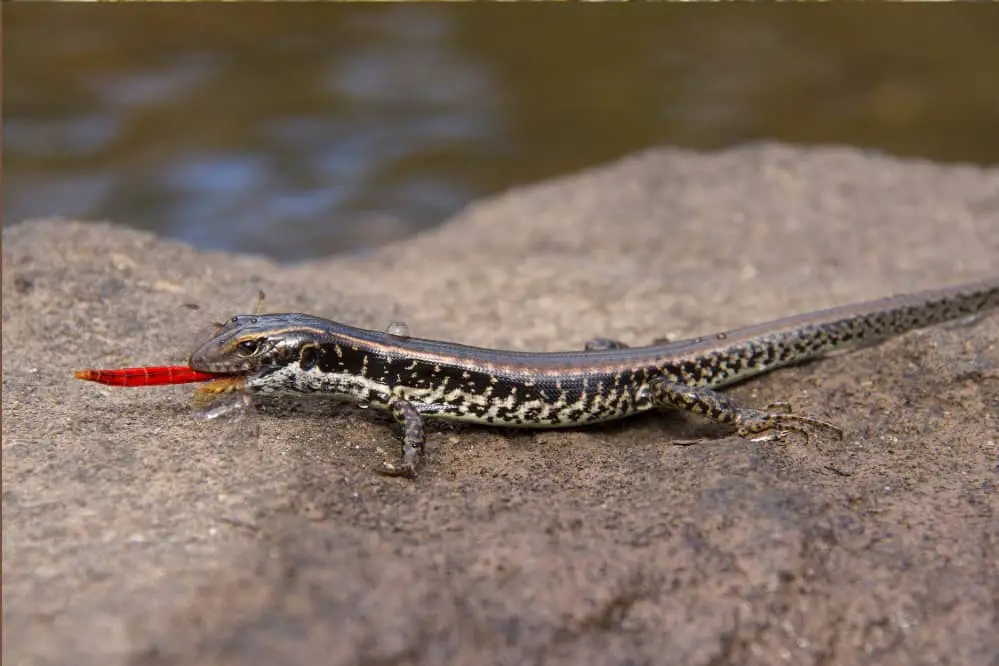Lizards are fascinating and quick vertebrates that, during their evolutionary journey, have learnt a lot of skills to protect themselves from predators in the wild. Though you may have seen some lizards enjoying themselves in water on youtube or other social media, hardly any of you would have seen house lizards in water. However, if someone had a rare chance to see a house lizard in water, the lizard probably may have drowned. So naturally, every curious mind reptile lover would wonder if lizards survive in water or how they protect themselves from predators in water. If you have similar thoughts, continue reading this article to satisfy your curiosity.
Can Lizards Survive In Water?
Yes, lizards can survive in water. Lizards are typically found on land; they are good swimmers and can spend some time in water to hunt or escape a predator. However, they can’t stay too long in water and have to keep their nose and face above the water’s surface to breathe.
Can Lizards Survive Underwater?
No, though most lizards can swim and spend some time inside water, they are terrestrial animals, after all, and their bodies are not designed to withstand underwater environments for an extended period of time. Most lizards can hold their breath for a short duration when they need to swim down under the water’s surface. However, like all land animals, lizards need air to breathe, and they don’t have gills (an organ found in fish or aquatic animals that helps respiration in water). So they have to come onto the water’s surface to breathe after every few minutes. Therefore, we see reptiles swimming with their nostrils above the water surface in videos on different animal channels.

There are some exceptions too, and some lizards do exist that can spend more time underwater, for example, Marine Iguanas. Like other lizards, Marine Iguanas don’t have gills and need air to breathe; however, they are a bit larger, so they can hold their breath for 10-12 minutes underwater. After that, they have to come to water’s surface to breathe like other members of the reptile community.
Can Lizards Walk On Water?
As we have discussed above, lizards are good swimmers and can also spend a few minutes underwater; walking on water’s surface is something you can’t expect from a lizard. However, Jesus lizards are the only reptile that can cover a reasonable distance by running (not walking) on water’s surface.

To do so, they start running fast on the ground from a distance to generate a lot of momentum before entering the water. This momentum helps them to travel a distance on the water’s surface. And if they fall before reaching the opposite bank of the water body (river, canal, etc.), they can’t run again because no more land is available to create momentum. So they will have to cover the remaining distance by swimming like other lizards.
What About Pet Lizards / Is There Any Risk Of Drowning A Pet Lizard?
Our fascinating pet lizards are descendants of wild reptiles hence pet lizards are as skilled swimmers as their wild ancestors. However, there is a lot of difference between wild and captive environment. Therefore pet lizards are at greater risk of drowning than wild lizards.
In the wild, if a lizard falls into water, he is more likely to find a rough or non-slippery surface within the next few minutes. This rough surface helps lizards to stick their feet and come out of water. However, in captivity, if your pet lizard falls into the bathtub or a sink filled with water, it’s almost impossible for him to set his feet on the slippery surface of the bathtub or sink. So if you don’t come to rescue him in time and take him out, he might drown.
What Should You Do When You See A Lizard In The Water?
It’s crucial to help any lizard in the water because, generally, lizards survive at moderate temperatures, and if the water is too hot or too cold, it can be fatal for the lizard in both cases. However, how you proceed depends on the type of lizard. If it’s a home gecko, you can simply pick it up with your hand to take it out of the water. In the case of garden lizards, it’s better to avoid using your hands and take the lizard out of the water with the help of a tool.
However, incase of a large lizard, you must be extremely careful, take help of other people and use proper tools or equipment. Remember that big lizards are aggressive and can bite, even if you are attempting to help them. Sometimes the bite of large lizards can be lethal too.
Related article Do Bearded Dragons Like to Swim?

| Some More Interesting Facts Related To Lizards And Water |
| In addition to hunting food or avoiding predators, lizards also enter water in search of a mating partner during the breeding season. In fact, the majority of lizards meet their breeding partners in the water. |
| Water is not a perfectly safe place for the lizards; many predators are also hidden there, so despite their excellent swimming skills, lizards enter water only when it’s must. |
| Though lizards are land animals, there are certain lizards that can move at a higher speed in water than on land, e.g., the Chinese dragon. |
| Lizards swim with their bodies streamlined and their nostrils outside water, allowing them to breathe easily. And will dive deep into water only when it’s very necessary. |
| Lizards can move along and against water flow effectively and use their tails as oars to change their direction. In fact, their tails work so efficiently that lizards can also move in a circle in water. |
| In the end, the point that looks to me the most interesting is that the ancestors of today’s lizards were not actually lizards; rather, they were marine animals. Thousands of years ago, they started their evolutionary journey by slowly moving toward land and learned to survive terrestrial conditions. Though they lost the necessary body parts to breathe in water during this evolutionary journey, they didn’t forget the art of swimming. |

